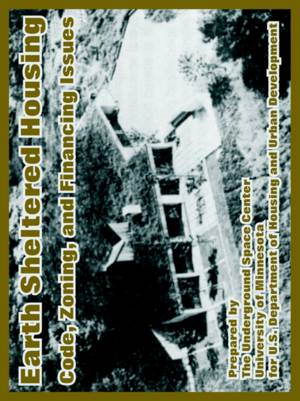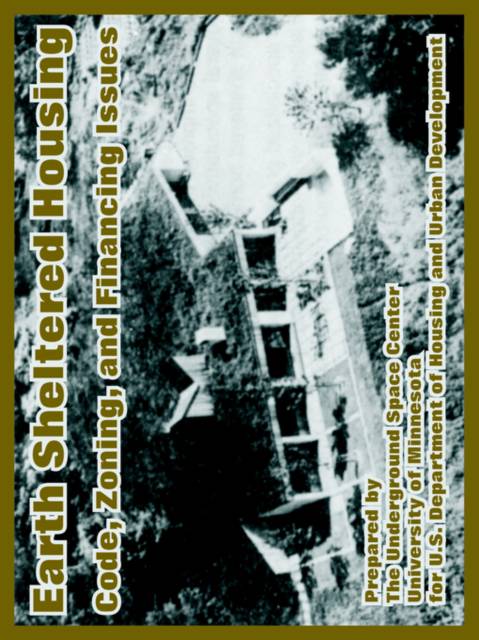
- Afhalen na 1 uur in een winkel met voorraad
- Gratis thuislevering in België vanaf € 30
- Ruim aanbod met 7 miljoen producten
- Afhalen na 1 uur in een winkel met voorraad
- Gratis thuislevering in België vanaf € 30
- Ruim aanbod met 7 miljoen producten
Zoeken
Earth Sheltered Housing
Code, Zoning, and Financing Issues
Underground Space Center, University of Minnesota, Dept of Housing and Urban Development
Paperback | Engels
€ 47,45
+ 94 punten
Omschrijving
Interest in the use of earth sheltered housing has expanded greatly in the past six years and particularly in the last two years. Prior to 1973, the few isolated earth sheltered houses in the United States had been built for primarily aesthetic reasons. Since then, due to the greater awareness of energy conservation and the environment, the number of earth sheltered houses has increased very rapidly. Despite the sizable increase in interest and awareness of the earth sheltered housing option, however, housing starts for this type of structure are still only a tiny fraction of all housing starts. In examining the future of earth sheltered housing, two key questions are raised: Does earth sheltered construction offer sufficient net advantages in relation to other types of housing to sustain a widespread continued increase in its use? Are there legal, regulatory or financing restraints which will make this a difficult option to pursue and hence only sought by the determined home owner/builder? This study discusses these issues in order to determine whether earth sheltered housing use is likely to continue to expand substantially, and whether such expansion is being hindered by unnecessary restraints. If there are such restraints it must be determined whether governmental actions can and should ease these restraints and, in addition, provide a positive boost for this type of construction.
Specificaties
Betrokkenen
- Auteur(s):
- Uitgeverij:
Inhoud
- Aantal bladzijden:
- 148
- Taal:
- Engels
Eigenschappen
- Productcode (EAN):
- 9781410223029
- Verschijningsdatum:
- 23/05/2005
- Uitvoering:
- Paperback
- Formaat:
- Trade paperback (VS)
- Afmetingen:
- 210 mm x 279 mm
- Gewicht:
- 349 g

Alleen bij Standaard Boekhandel
+ 94 punten op je klantenkaart van Standaard Boekhandel
Beoordelingen
We publiceren alleen reviews die voldoen aan de voorwaarden voor reviews. Bekijk onze voorwaarden voor reviews.








